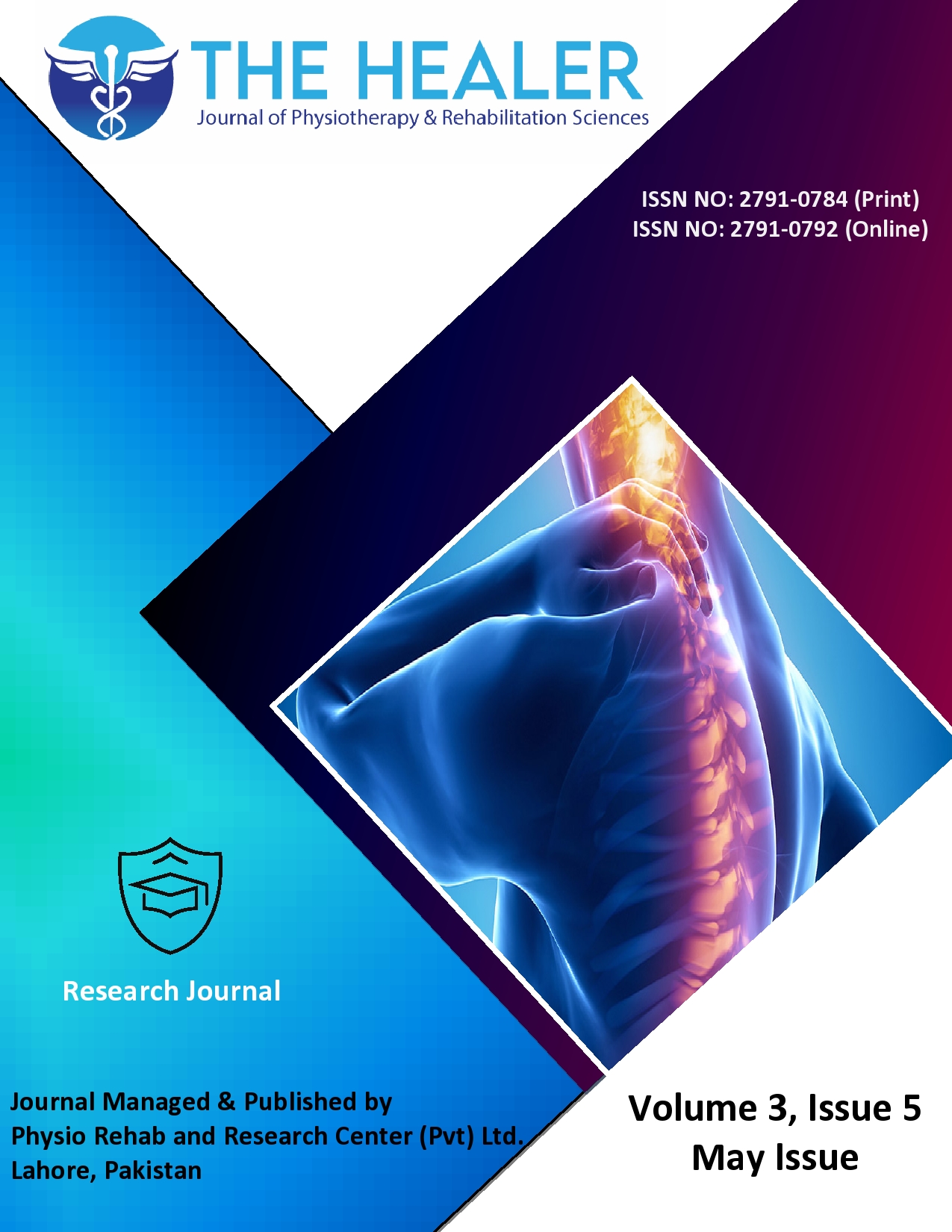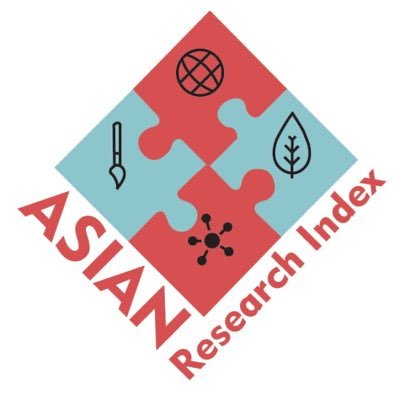Self-Reported Neck Pain and Associated Risk Factors Among Adolescent Madrassa Students in Karachi, Pakistan; A Cross-Sectional Study
Self-Reported Neck Pain & Factors in Madrassa Students
DOI:
https://doi.org/10.55735/hjprs.v3i5.94Keywords:
cervicalgia, disability, ergonomics, lifestyle, neck pain, postureAbstract
Background: Neck pain is the most common health issue, more prevalent in adolescents and they are susceptible to chronic neck pain in the future. This pain is caused by various modifiable and non-modifiable risk factors in young adults, including physical and functional factors, although head posture is the prime causative factor among them. Objective: To determine the frequency of neck pain and its associated risk factors among adolescent madrassa students of Karachi, Pakistan. Methods: An observational cross-sectional design had been conducted by using non-probability purposive sampling and the sample size of 378 was calculated by using Open-Epi version 3.0 with a confidence level of 95%. The written consent and questionnaire consisting of part A demographics and part B of questions regarding posture, study duration and pain frequency were filled by each student while considering the ethical considerations. Frequency and percentage were calculated for all qualitative variables. The chi-square test was applied to identify the association between different variables while p-value≤0.05 was considered as significant. Results: Neck pain frequently occurs in both gender and out of 378 individuals, 354 (93.6%) respondents had neck pain while only 24 (6.34%) reported no pain. According to this study, neck pain is more prevalent in females (96.7%) as compared to males (90.8%). The numerical pain rating scale showed that 112 (61.5%) of the 182 females suffered mild pain, 60 (32.9%) had moderate and 4 (2.19%) reported severe neck pain. Among 196 male respondents, 89 (45.4%) reported mild pain, 20 (10.2%) suffered severe pain, and 18 (9.1%) had no pain. Impaired head alignment while studying, prolonged study hours without a break and flexed neck posture despite sitting are the contributing risk factors for having neck pain. Conclusion: Bad posture, poor sitting ergonomics,and prlong study duration are the key factors for causing neck pain. It also concluded that the majority of the population (93.65%) was having neck pain whereas only 6.35% of adolescent students had no cervicalgia.
Downloads
References
Hogg-Johnson S, van der Velde G, Carroll LJ, et al. The burden and determinants of neck pain in the general population: results of the Bone and Joint Decade 2000–2010 Task Force on Neck Pain and Its Associated Disorders. 2008; 17: 39-51. DOI: https://doi.org/10.1007/s00586-008-0624-y
Fares J, Fares MY, Fares YJSni. Musculoskeletal neck pain in children and adolescents: risk factors and complications. 2017; 8. DOI: https://doi.org/10.4103/sni.sni_445_16
Binder AIJB. Cervical spondylosis and neck pain. 2007; 334(7592): 527-31. DOI: https://doi.org/10.1136/bmj.39127.608299.80
Carroll LJS. The factors associated with neck pain and its related disability in the Saskatchewan population. 2000; 25(9): 1109-17. DOI: https://doi.org/10.1097/00007632-200005010-00012
March L, Smith EU, Hoy DG, et al. Burden of disability due to musculoskeletal (MSK) disorders. 2014; 28(3): 353-66. DOI: https://doi.org/10.1016/j.berh.2014.08.002
Hoy D, March L, Woolf A, et al. The global burden of neck pain: estimates from the global burden of disease 2010 study. 2014; 73(7): 1309-15. DOI: https://doi.org/10.1136/annrheumdis-2013-204431
Gulis G, Aringazina A, Sangilbayeva Z, et al. Population health status of the republic of Kazakhstan: trends and implications for public health policy. 2021; 18(22): 12235. DOI: https://doi.org/10.3390/ijerph182212235
Oliveira AC, Silva AGJMt. Neck muscle endurance and head posture: a comparison between adolescents with and without neck pain. 2016; 22: 62-7. DOI: https://doi.org/10.1016/j.math.2015.10.002
King S, Chambers CT, Huguet A, et al. The epidemiology of chronic pain in children and adolescents revisited: a systematic review. 2011; 152(12): 2729-38. DOI: https://doi.org/10.1016/j.pain.2011.07.016
Hoftun GB, Romundstad PR, Zwart J-A, Rygg MJP. Chronic idiopathic pain in adolescence–high prevalence and disability: the young HUNT Study 2008. 2011; 152(10): 2259-66. DOI: https://doi.org/10.1016/j.pain.2011.05.007
Falla D, Farina D, Graven-Nielsen TJEbr. Experimental muscle pain results in reorganization of coordination among trapezius muscle subdivisions during repetitive shoulder flexion. 2007; 178: 385-93. DOI: https://doi.org/10.1007/s00221-006-0746-6
Falla D, Jull G, Hodges PJEbr. Feedforward activity of the cervical flexor muscles during voluntary arm movements is delayed in chronic neck pain. 2004; 157: 43-8. DOI: https://doi.org/10.1007/s00221-003-1814-9
Edmondston SJ, Chan HY, Ngai GCW, et al. Postural neck pain: an investigation of habitual sitting posture, perception of ‘good’posture and cervicothoracic kinaesthesia. 2007; 12(4): 363-71. DOI: https://doi.org/10.1016/j.math.2006.07.007
Schomacher J, Falla DJMt. Function and structure of the deep cervical extensor muscles in patients with neck pain. 2013; 18(5): 360-6. DOI: https://doi.org/10.1016/j.math.2013.05.009
Silva AG, Punt TD, Sharples P, Vilas-Boas JP, Johnson MIJAopm, rehabilitation. Head posture and neck pain of chronic nontraumatic origin: a comparison between patients and pain-free persons. 2009; 90(4): 669-74. DOI: https://doi.org/10.1016/j.apmr.2008.10.018
Silva AG, Sharples P, Johnson MIJPTR. Studies comparing surrogate measures for head posture in individuals with and without neck pain. 2010; 15(1): 12-22. DOI: https://doi.org/10.1179/174328810X12647087218631
El-Metwally A, Salminen JJ, Auvinen A, Macfarlane G, Mikkelsson MJBmd. Risk factors for development of non-specific musculoskeletal pain in preteens and early adolescents: a prospective 1-year follow-up study. 2007; 8: 1-8. DOI: https://doi.org/10.1186/1471-2474-8-46
Grimes P, Legg SJJotH-ES. Musculoskeletal disorders (MSD) in school students as a risk factor for adult MSD: a review of the multiple factors affecting posture, comfort and health in classroom environments. 2004; 7(1): 1-9. DOI: https://doi.org/10.1618/jhes.7.1
Mohd Azuan K, Zailina H, Shamsul B, Nurul Asyiqin M, Mohd Azhar M, Syazwan Aizat IJJAS. Neck, upper back and lower back pain and associated risk factors among primary school children. 2010; 10(5): 431-5. DOI: https://doi.org/10.3923/jas.2010.431.435
Brattberg GJEJoP. Do pain problems in young school children persist into early adulthood? A 13-year follow-up. 2004; 8(3): 187-99. DOI: https://doi.org/10.1016/j.ejpain.2003.08.001
Jones GT, Silman AJ, Power C, Macfarlane GJJA, Rheumatism. Are common symptoms in childhood associated with chronic widespread body pain in adulthood?: Results from the 1958 british birth cohort study. 2007; 56(5): 1669-75. DOI: https://doi.org/10.1002/art.22587
McBeth J, Jones KJBp, rheumatology rC. Epidemiology of chronic musculoskeletal pain. 2007; 21(3): 403-25. DOI: https://doi.org/10.1016/j.berh.2007.03.003
Michaleff ZA, Kamper SJ, Maher CG, Evans R, Broderick C, Henschke NJESJ. Low back pain in children and adolescents: a systematic review and meta-analysis evaluating the effectiveness of conservative interventions. 2014; 23: 2046-58. DOI: https://doi.org/10.1007/s00586-014-3461-1
Malik L, Pasha M, Khalid S, Ahmad A, Gilani SJJse. Prevalence of neck pain among undergraduate students of Lahore. 2017; 8(10): 569-76.
Ahmad M, Ahmad U, Fazal Ur Rehman ZK, Ahmad SJp. Musculoskeletal neck pain among children and adolescents; risk factors and complications. 2020; 5: 8. DOI: https://doi.org/10.29309/TPMJ/2020.27.02.4042
Nejati P, Lotfian S, Moezy A, Nejati MJMjotIRoI. The relationship of forward head posture and rounded shoulders with neck pain in Iranian office workers. 2014; 28: 26.
Ayanniyi O, Mbada CE, Iroko OPJTPMB. Neck Pain Occurrence and Characteristics in Nigerian University Undergraduates. 2010; 9(3).

Downloads
Published
License
Copyright (c) 2023 The Healer Journal of Physiotherapy and Rehabilitation Sciences

This work is licensed under a Creative Commons Attribution 4.0 International License.














